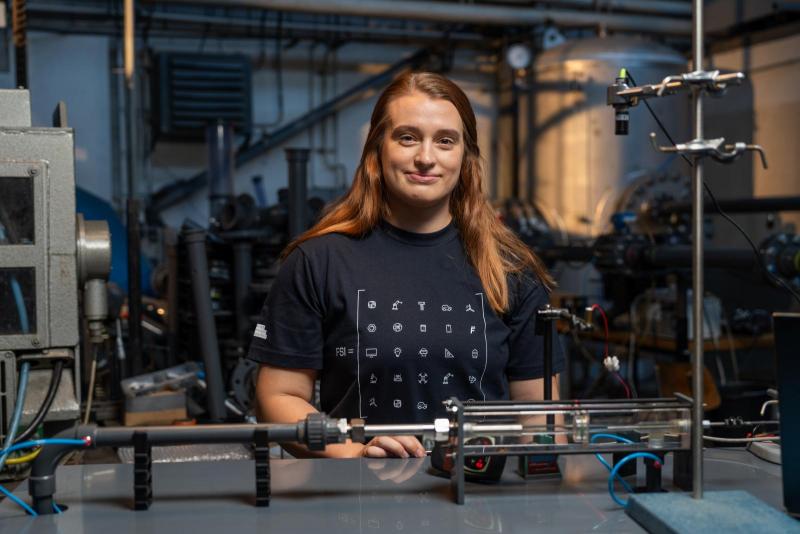People
For water of even higher quality. Cavitation and low-temperature plasma technology purifies water from pesticides and hormones

“I have had a relationship with nature since childhood. We sorted our waste at home back when it wasn't cool at all. Today, I am trying to reduce my plastic consumption and prefer to use solid eco-friendly shampoos and soaps that are more easily degradable by the environment,” explains Paulína Monková, a fifth-year student at the FME BUT, why she decided to participate in the project.
Her specialization in fluid engineering was prompted by a visit to International Engineering Fair in 2021. Pavel Rudolf from the Institute of Energy, FME BUT, presented his patented invention CaviPlasma, which he and his team from FME BUT have been working on for over 15 years.
The technology uses so-called hydrodynamic cavitation – a physical phenomenon whereby a reduction in pressure can be used to cause steam bubbles to appear in the water, similar to boiling. When the bubbles liquefy, a strong collapse occurs causing a pressure wave. And it is the one that is able to destroy and neutralize microorganisms. However, the combination of cavitation and low-temperature plasma can also change the chemical composition of the liquid. This produces hydrogen peroxide, which acts as a disinfectant in water. The technology thus enables the treatment of several times larger fluid volumes.
“Wastewater treatment plants use a biological treatment process. But it cannot break down everything – for example, drug residues or oestrogens from contraceptives remain in the water and negatively affect smaller animals, including fish. I was intrigued by the water purification equipment. I had no idea that fluid engineering had such great environmental applications and that I could be involved as a student in something that has such a strong environmental impact,” Monková notes.
The student is now in her second year as part of a team focused on hydraulic properties. “I am currently investigating the effect of changing the parameters of the Venturi nozzle in a closed circuit. The Venturi nozzle is actually a tube that narrows in the middle. Due to the increased velocity and reduced pressure at the narrowest point of this tube, water evaporates and bubbles form (cavitation), which cause a pressure wave when they burst. In the future, I plan to investigate the hydraulic parameters of CaviPlasma in other methods of inducing cavitation than the Venturi nozzle.”
She is clear about her further involvement in the project: “I would be happy if we could optimize the whole technology to be energy efficient and practically usable for wastewater treatment plants. So far, the residual substances that remain in the purified water may only be causing problems in the organisms of the fish. But we don't know how it affects other organisms, and over time it will be a problem that will need to be addressed,” she concludes.
Previously, plasma water treatment equipment was only used on a laboratory scale and was not very effective. However, CaviPlasma works well on a large scale. It can purify up to 15 cubic meters of water within an hour and thus has a wide industrial application. The technology has already received a Czech patent and an international patent application has been accepted.
New biogas treatment technology: BUT cooperates with top European teams
Majáles returns after 2 years, royal candidates from BUT are ready to fight
Waste is science. Thanks to experts from BUT, the Czech Republic has a forecast of their production
I enjoy applying mechanical engineering to the human body, says doctoral student
ARGO underwater: Prototype of student submarine on display at IDET Fair
